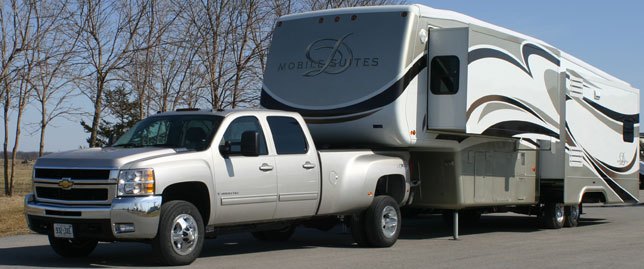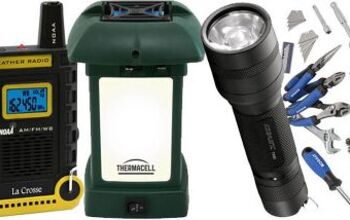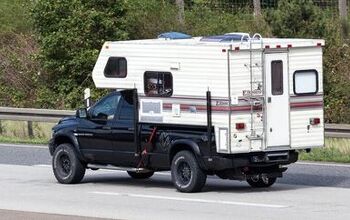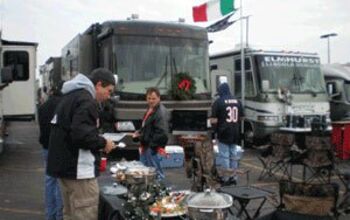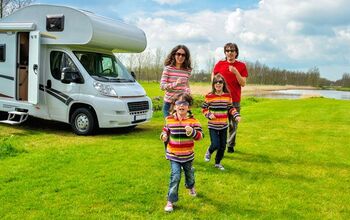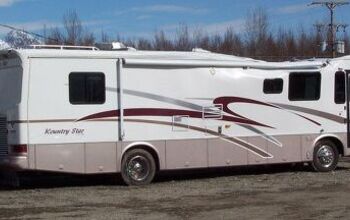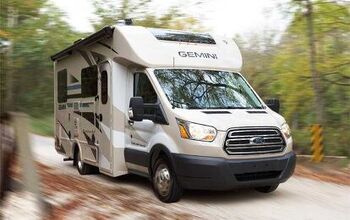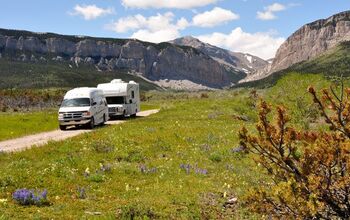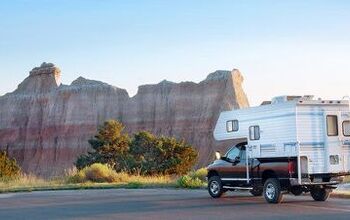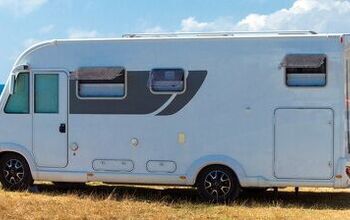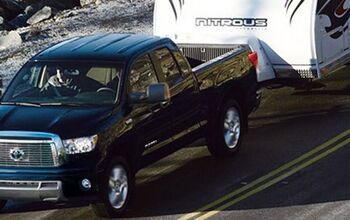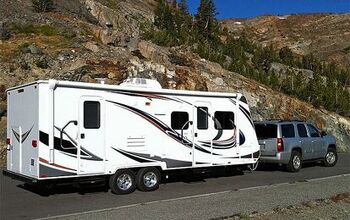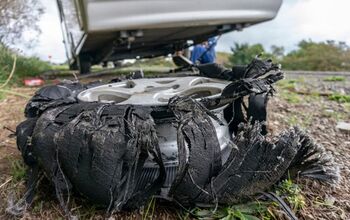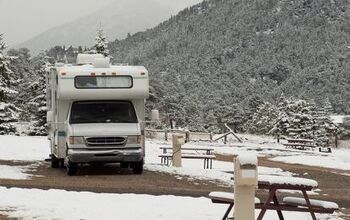2009 DRV Luxury Suites Mobile Suites Review
DoubleTree RV, now known simply as DRV, builds fifth wheels exclusively. We had a chance to test out 38-foot, 14,150-pound DRV Luxury Suits Mobile Suite – the 38TKSB3.
It’s important to note right up front that DRV fifth wheels are anything but cheap. Of course, the word cheap does not only refer to price – in this case it also means that the materials, construction and fixtures used in these units are also anything but cheap. This second reference to overall price is particularly important because much of the money that DRV demands for its units pays for systems that you can’t see; but which for the full-timer will make the difference between a worry-free travel experience and a trip spent dealing with a litany of Mickey mouse system repairs.
Now you don’t have to be a full-timer to own a Mobile Suites but most will at least spend part of their year using it as a principle residence. This fact makes it that much more important that the interconnected host of mechanical, electric, hydraulic, plumbing, structural and HVAC systems work without issue. Face it; there comes a point where time is more important than money. For these reasons I decided to try and offer my evaluation of the Mobile Suites from the outside in.
Starting underneath, the trailer is built on a 15-inch steel boxed tube chassis (running off a 12-inch I-beam frame) which is insulated with fiberglass and sealed with a double-layer underbelly. Above the frame (and below the floor) is a vapor barrier, then more insulation between the aluminum floor joists which is covered by 5/8-inch plywood and surface flooring. The net effect of that insulation is a R29 rating (note: R-ratings are not just about keeping heat in the unit, but also about keeping it out in summer). The steel boxed frame on the trailer also creates the basement and this design offers a considerable amount of space down there as well. I noted the forward pass-through storage has access from three sides, large doors open to around 130 cubic feet of space and to minimize stooping can be equipped with an optional slideout tray. Furthermore (I saw while crawling around in there) these inside, out of sight, spaces are also nicely finished and every wire, tube, line and fasteners properly aligned, neat and secure.
A key feature I noted again and again is the use of vapor barrier and sound deadening material in the walls and roof – and as a four-season unit the fight many RVers are faced with is the danger of water damage – from leaks certainly – but the more insidious threat, is humidity penetration. This is what causes rot and mould in places you’ll never see; instead you’re likely to smell it first. In all the material I was supplied I found references to fiberglass, aluminum, vinyl and foam materials used in the floor walls and roof- all sealed with vapor barriers. Together these sandwiched materials offer an R25 rating overhead and the walls, which are 3.25- inches thick, have an R13 insulation rating. DRV also points out that all its wooden components – like the floor – are bolted and screwed, no staples are used. This is a feature that shows off its worth after the first thousand miles on the road – staples can shake loose. The outside finish is gel-coated fiberglass with automotive style one-piece front and rear caps. The rear cap also has a detachable ladder and features automotive style hi-visibility LED lights.
What does all this mean? The weather stays outside, so does moisture, campground noise will be more muted and the floors will be warm – even in winter.
Over and above this build list though is an optional package called “Canadian All Weather” that adds twin 30,000 BTU furnaces and heat pads on all tanks. Thermopane windows are also available; this will make the trailer a cozy winter home – of course most owners will want to get out of the snow.
Now to get the trailer to a climate that won’t tax the furnace DRV has installed a “TrailAir” air pin box. For those not familiar with the TrailAir, I’ve used one and its works to cut the vibration and harshness out of the towing experience making for a much smoother ride in the tow vehicle. Under the trailer DRV offers a set of regroovable Goodyear tires and aluminum eight-bolt wheels (that won’t rust) on two axles that use TrailAir center-point air suspension. This air supported suspension features bronze bushings and is greasable. These four wheels are also equipped with disc brakes, using ceramic pads, by Kodiak.
Running the slideouts, landing gear and leveling the trailer is a HD industrial hydraulic pump with independent controls. Called the “Level-Up” system the controls are outside conveniently located in a lockable compartment right next to the landing gear switch (and main battery shut-off) – it automatically finds level when deployed. It can be operated from a hand-held remote as well (hey, no bending). An interesting feature is that the front and rear stabilizing jacks are set at an outward five percent angle to provide maximum stability. Another centralized outdoor panel has all the hook-ups for phone, cable, internet, satellite, water, waste valves and outdoor shower. Many builders do this now – I’d like to see them all do it.
Another system whose importance is often overlooked is the plumbing. Every unit has water but not many builders go to the trouble of adding a manifold system that maintains even water flow throughout the unit – even when the shower and washer are going at the same time. As with everything on this trailer access is good and the way the lines are labeled and laid out would make for easy troubleshooting – should there ever be any. The 50 amp electrical service uses automotive type 12V wiring throughout – all controlled from a centralized command center. One component of this system is a power management system that monitors usage, displays it, and also shuts down individual components if there is a danger of blowing fuses (so the AC goes off rather than the fridge defrosting while you’re at the beach).
So, what about inside your thinking by now – OK. Let me first say that the materials and finish is in keeping with a unit that costs well over a hundred thousand dollars. Of course, this is expected – where DRV adds value is in its design ideas (they offer over 20 different layouts and around a dozen color and decor combinations) and extra touches. Like: cedar-lined closet with built-in shoe rack; a hide-away power lift TV credenza; granite countertops; four-door fridge/freezer; a variable height coffee table that doubles as a desk; available front load washer and dryer; dimmer-switch controlled lighting; extra large kitchen spaces with island centered double sinks. DRV even says it has a single remote that will control every entertainment system in the unit; called Smart Suite Technology it uses infrared signals. And the list goes on. This is the stuff you can see and which will influence your buying decision. But for this test I felt that trying to offer clarity on the foundation that all this is built on was the most important part of justifying the price tag.
